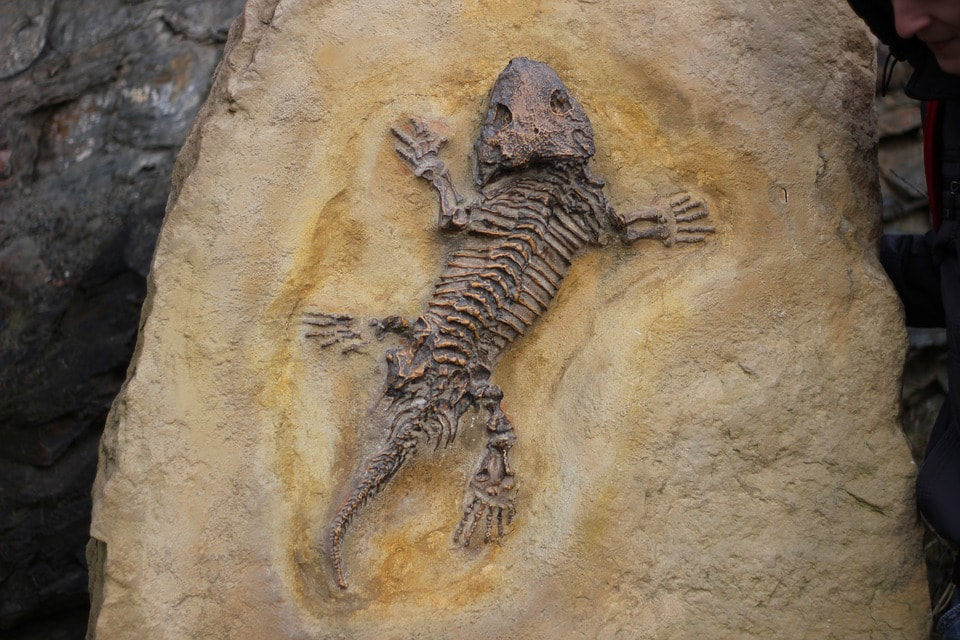Mary Anning was born on 21 May 1799 in Lyme Regis, Dorset, England, as a daughter of Mary ‘Molly’ Moore Anning and cabinetmaker Richard Anning. Her father frequently took Mary and her brother Joseph on fossil-hunting expeditions. To help their family make ends meet, they would place their discoveries on a table outside their home and offer them for sale to tourists. When Mary was 11 years of age, her father passed on. Mary Anning and her brother Joseph Anning (born 1796) were the only two of the ten children in the family to survive into adulthood. She continued in the family fossil hunting business, discovering skeletons of Jurassic marine animals including ichthyosaurs, plesiosaurs, pterosaurs, and various fishes in the collapsing seaside cliffs along the English channel. In 1826, at 27 years of age, she opened the Anning’s Fossil Depot, where she displayed and sold her fossil finds. Mary would eventually become known as one of the most famous of all fossil hunters, dealers, and paleontologists. However, during her lifetime, she was never taken as seriously as perhaps she could have been because she was a woman from a poor background, while most scientists at the time were men from wealthy families. Mary Anning passed on at 47 years of age on 9 March 1847 in Lyme Regis, Dorset, England, and rests in Saint Michael the Archangel Churchyard, Lyme Regis, Dorset, England. In an article in the February 1865 edition of his magazine, “All the Year Round,” Charles Dickens said of her, “The carpenter’s daughter has won a name for herself, and has deserved to win it.”
|
|










































Life




























Time





Work


Do you need a joke, quotation, paragraph, or poem about a particular subject or topic? Go to the search box found at the top right side of this page and type it in. We have a surprising variety of material and we add new stuff regularly, so you might find what you are seeking.

Make Fun Of Life! can be right there with you, at home or wherever you go, on a laptop, cell phone, tablet, or any other internet connected device. Bookmark us and visit whenever you can. We regularly add fascinating new articles just for you!

You are now on the Make Fun Of Life! Website . . . where humor, inspiration, and learning are back together again - as they were always meant to be.

Welcome to the Make Fun Of Life! Website. We are here to bring a little happiness to the world. Would you like to be among the first people to see new articles when they appear on the website? Click on the social media buttons on the left side of your screen and then follow us. We wish you the very best imaginable day, and thank you for visiting!
|












